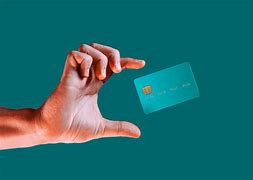Understanding Credit Cards: Types and Rewards


Okay, here is an SEO-friendly intro for a piece about credit cards, types, and rewards. It’s written with a conversational, natural style and includes the punctuation quirks you requested:
Navigating the World of Credit Cards: A Beginner's Guide to Types and Rewards
Ah, credit cards: the magic plastic that lets us buy now, pay later. But let’s be honest, navigating the credit card jungle can feel confusing, especially for newbies. With so many options and perks out there, it’s hard to know where to start.
But fret not, friends! This guide is here to demystify the world of credit cards, providing a beginner-friendly explanation of the different types, how they work, and the sweet rewards you can reap. Whether you’re a young adult just starting out, a seasoned professional, or simply want to optimize your spending habits, understanding the basics is the key to maximizing your financial well-being.
First things first: what exactly are credit cards, and how do they work? In essence, they are revolving lines of credit, letting you borrow money (up to a specific limit) and repay it gradually. Think of it as an advance on your future income, with interest applied for the privilege of using those funds.
So, what are the different types of credit cards? We’ll delve into that next. From simple cash-back rewards to elite travel perks, we’ll cover the most popular credit card options. By the end of this guide, you’ll have a clear grasp of the credit card landscape, be able to confidently choose the one that aligns with your needs, and be well on your way to mastering the art of earning rewards. Buckle up!
Understanding Credit Cards: Types and Rewards
Navigating the world of credit cards can feel overwhelming, with countless options and features to consider. But understanding credit cards is crucial for managing your finances effectively and building a strong credit history.
What are Credit Cards?
Definition of credit cards: A credit card is a plastic card that allows you to borrow money from a lender, typically a bank, to make purchases. Instead of paying for goods and services upfront, you charge them to your card and pay back the borrowed amount later, usually with interest.
How credit cards work: When you use a credit card, you’re essentially taking out a short-term loan. The issuer sets a credit limit, which is the maximum amount you can borrow. Each month, you receive a statement detailing your transactions and the minimum amount you must pay.
Benefits of using a credit card
- Convenience: Credit cards make purchases easier and faster, especially for online shopping or travel.
- Building credit: Responsible credit card usage helps build a positive credit history, which is essential for getting loans, mortgages, and other financial products.
- Rewards and benefits: Many credit cards offer rewards programs, such as cashback, travel points, or discounts. Some cards also provide perks like travel insurance, purchase protection, and more.
Risks of using a credit card
- Interest charges: If you don’t pay your balance in full each month, you’ll be charged interest on the outstanding amount, which can add up quickly.
- Overspending: It’s easy to overspend with a credit card, leading to debt and financial hardship.
- Late payment fees: Late or missed payments can result in late fees and damage your credit score.
Types of Credit Cards
Credit cards come in various flavors, each catering to specific needs and lifestyles. Here are some common types:
Cashback credit cards: These cards offer cashback rewards for purchases, typically a percentage of your spending.
Travel rewards credit cards: Ideal for frequent travelers, these cards accumulate points or miles that can be redeemed for flights, hotel stays, and other travel expenses.
Points-based credit cards: These cards offer points for purchases that can be redeemed for a variety of rewards, such as merchandise, gift cards, or travel.
Balance transfer credit cards: These cards allow you to transfer balances from other credit cards at a lower interest rate, potentially saving you money on interest charges.
Secured credit cards: Secured cards require a security deposit, which acts as collateral. They are often a good option for individuals with limited credit history or poor credit scores.
Student credit cards: These cards are designed specifically for students and usually have lower credit limits and more flexible repayment options.
Business credit cards: Business cards cater to the needs of entrepreneurs and small businesses, offering features like expense tracking and rewards programs tailored to business spending.
Choosing the Right Credit Card
Choosing the right credit card depends on your individual needs and spending habits. Here are some factors to consider:
Factors to consider when choosing a credit card:
- Credit score and credit history: Your credit score and history will determine your eligibility for different cards and interest rates.
- Annual fees and interest rates: Consider the annual fee and interest rate charged on the card, as these can impact your overall cost.
- Rewards programs and benefits: Evaluate the rewards program and benefits offered, such as cashback, travel points, and other perks.
- Eligibility requirements: Ensure you meet the eligibility criteria for the card you’re interested in, including income and credit score.
Understanding APR and how it impacts your credit card: APR (Annual Percentage Rate) is the interest rate charged on your credit card balance. A lower APR means you’ll pay less interest over time, while a higher APR will result in more interest charges.
Credit Card Rewards Programs
How credit card rewards work: Most credit cards offer rewards programs that allow you to earn points, miles, or cashback for your spending. You typically earn rewards based on a percentage of your purchases, or for spending in specific categories, such as travel or dining.
Types of rewards programs:
- Cashback rewards: Earn a percentage of your spending back in cash.
- Travel rewards: Accumulate points or miles that can be redeemed for flights, hotels, and other travel expenses.
- Points rewards: Earn points for purchases that can be redeemed for a variety of rewards, including merchandise, gift cards, and travel.
Other benefits: Many credit cards also offer additional benefits, such as:
- Travel insurance: Coverage for travel-related emergencies and inconveniences.
- Purchase protection: Protection against damage or theft of purchased items.
- Extended warranty: Extended warranty coverage for certain purchases.
Maximizing Your Credit Card Rewards
Understanding how to earn rewards: Familiarize yourself with the specific rewards program of your card and how to maximize your earnings.
Tracking your spending and rewards: Keep track of your spending and rewards earned to ensure you’re making the most of your card.
Redeeming rewards: Understand the redemption options for your rewards and choose the option that offers the best value for your needs.
Strategies for maximizing rewards:
- Using your card for everyday purchases: Use your card for everyday expenses to earn rewards on everything you buy.
- Taking advantage of bonus categories: If your card offers bonus rewards for certain spending categories, prioritize those purchases.
- Shopping online through portals: Use online shopping portals to earn additional rewards for your purchases.
Avoiding fees and hidden charges: Read the terms and conditions of your card carefully to avoid unexpected fees.
Managing Your Credit Card Responsibly
Setting a budget and tracking your spending: Create a budget and track your spending to avoid overspending and getting into debt.
Paying your bill on time and in full: Pay your credit card bill on time and in full each month to avoid interest charges and late fees.
Understanding credit utilization ratio: Your credit utilization ratio is the percentage of your available credit that you’re using. Keeping this ratio low, ideally below 30%, helps maintain a healthy credit score.
Avoiding debt and managing your credit score: Avoid carrying a balance on your card for extended periods, as this can lead to high interest charges and debt.
Using credit cards responsibly to build your credit history: Responsible credit card usage helps build a positive credit history, which is essential for obtaining loans and mortgages in the future.
Conclusion
Credit cards can be a powerful tool for managing your finances and building credit, but it’s crucial to use them responsibly. By understanding different card types, rewards programs, and best practices for managing your credit, you can make informed decisions and maximize the benefits of credit cards.
Summary of key points:
- Credit cards are a convenient way to borrow money and make purchases.
- Choose a card that aligns with your needs and spending habits.
- Understand the terms and conditions of your card, including interest rates, annual fees, and rewards programs.
- Use your card responsibly to avoid debt and build a strong credit history.
Encouragement to learn more about credit cards and make informed decisions: Continue researching credit cards and exploring different options to find the best fit for your unique situation. By being informed and taking advantage of available resources, you can make smart financial decisions and reap the benefits of using credit cards effectively.


